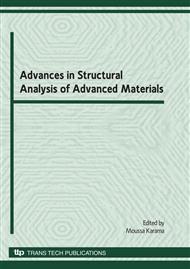p.1
p.9
p.19
p.29
p.37
p.49
p.63
p.73
Chemical Structure Influence of Silicone Adhesives on Curing Process
Abstract:
The density increase of components used in power converters involves cooling problems and results to the use of new materials and innovative assembly processes (such as adhesive bonding). Searching for an adhesive family leads to the silicones. This paper focuses on the silicone adhesive formulation as regards the use requirements (temperature range, chemical agents). This first article is dealing with the influence of chemical structure on vulcanization process parameters and physical properties before ageing. The first adhesive family is the oxime terminated polydimethylsiloxane (PDMS) adhesive’s one which cures as soon as it enters in contact with air moisture. This cure process seems too sensitive to humidity and temperature and involves a too long time process for industrial applications. On the contrary the process for silicone cured by polyaddition is easy. Besides, the introduction of a few phenyl groups in dimethylsiloxane backbone makes the PDMS free from crystallisation ensuring the silicone flexibility in a higher use temperature range.
Info:
Periodical:
Pages:
19-28
Citation:
Online since:
May 2010
Authors:
Price:
Сopyright:
© 2010 Trans Tech Publications Ltd. All Rights Reserved
Share:
Citation:


